Analysis of MovieLens Database Using SQL Queries - Data Science
VerifiedAdded on 2020/09/22
|7
|1319
|264
Homework Assignment
AI Summary
This assignment focuses on analyzing the MovieLens dataset using SQL queries. It begins with an overview of the database schema, including entity-relationship diagrams and relational schema design, ensuring adherence to normalization principles. The core of the assignment involves formulating and executing SQL queries to extract meaningful insights from the dataset. These queries address a range of questions, such as identifying users who contributed tags, counting movies with specific genre combinations, analyzing rating distributions, listing movies released within a particular time frame, and determining the most highly rated movies based on different criteria, including weighted ratings. The solutions provided demonstrate the ability to write effective SQL queries, interpret query results, and derive valuable conclusions from the data. The assignment covers a wide range of SQL functionalities, including string manipulation, aggregation, joining tables, and ranking data. The document is contributed by a student to be published on the website Desklib, which provides all the necessary AI based study tools for students.
1 out of 7
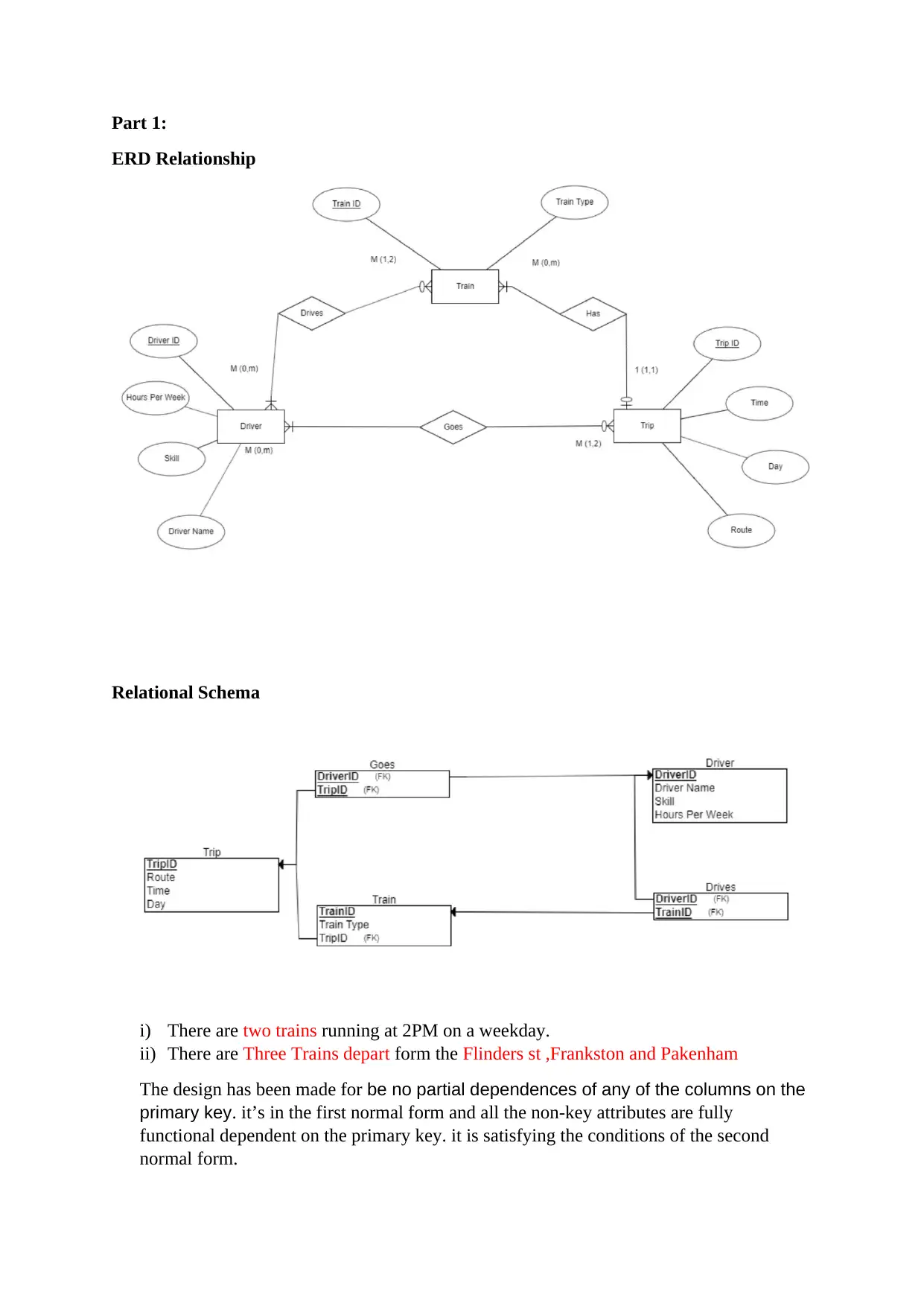
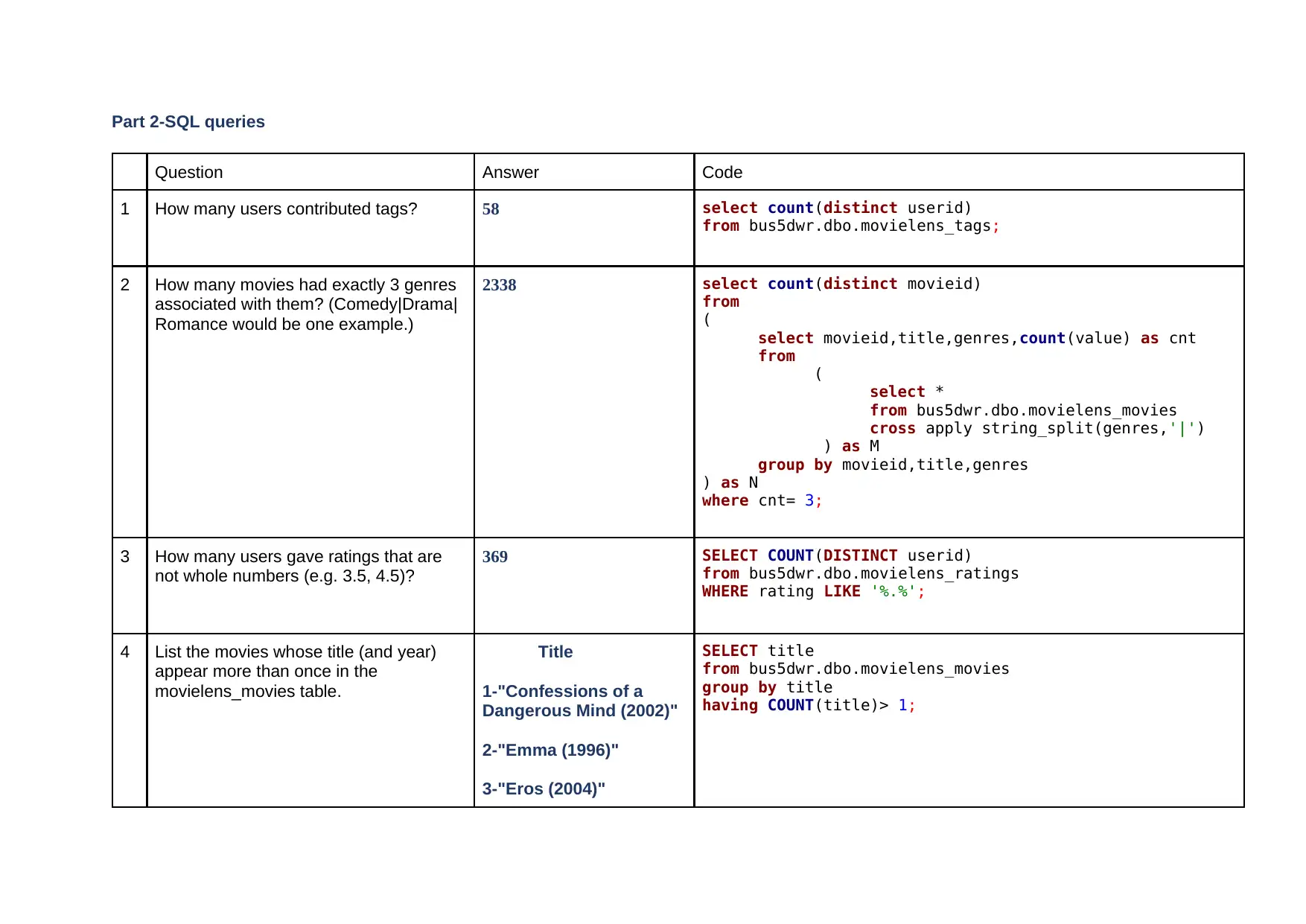
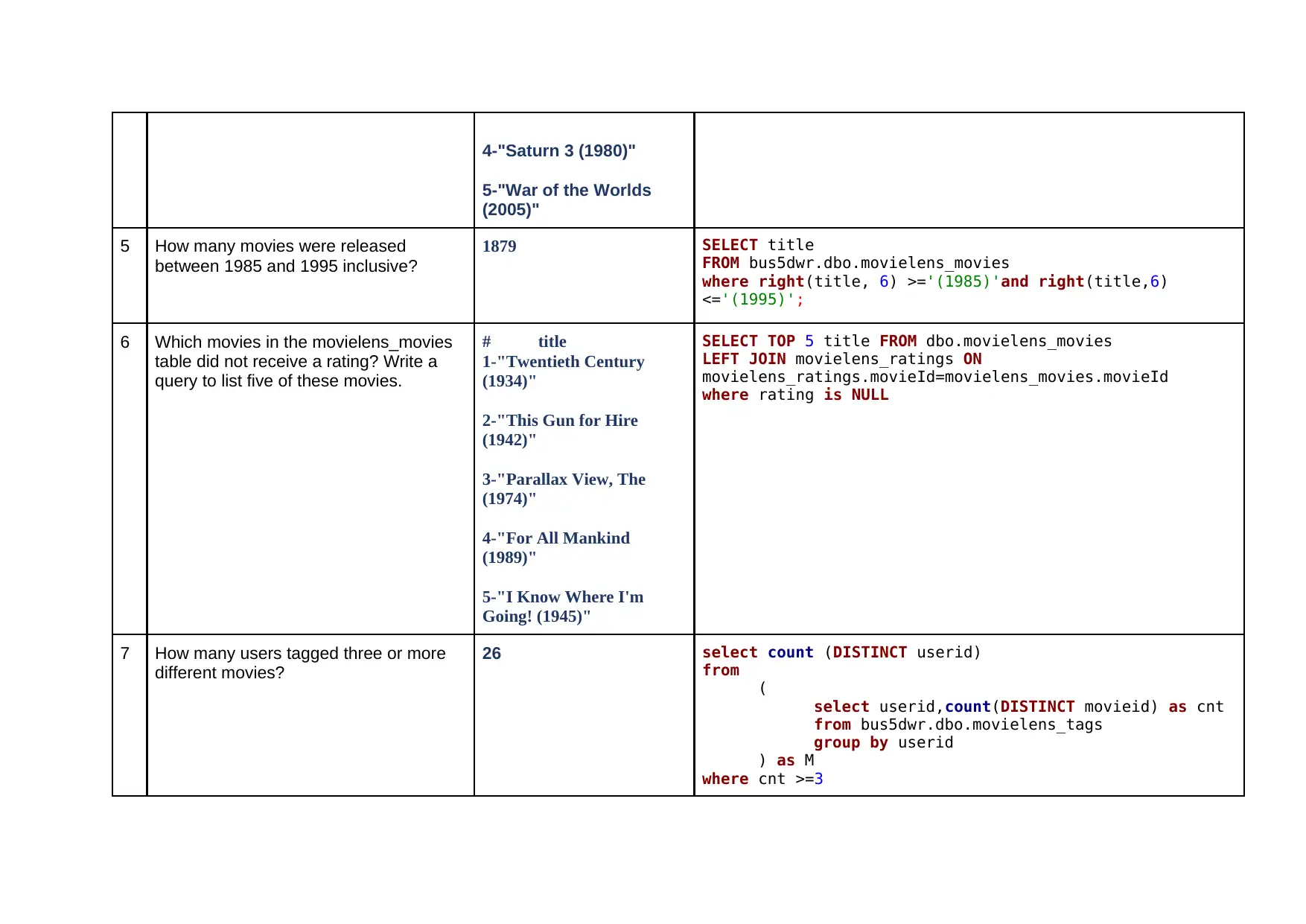

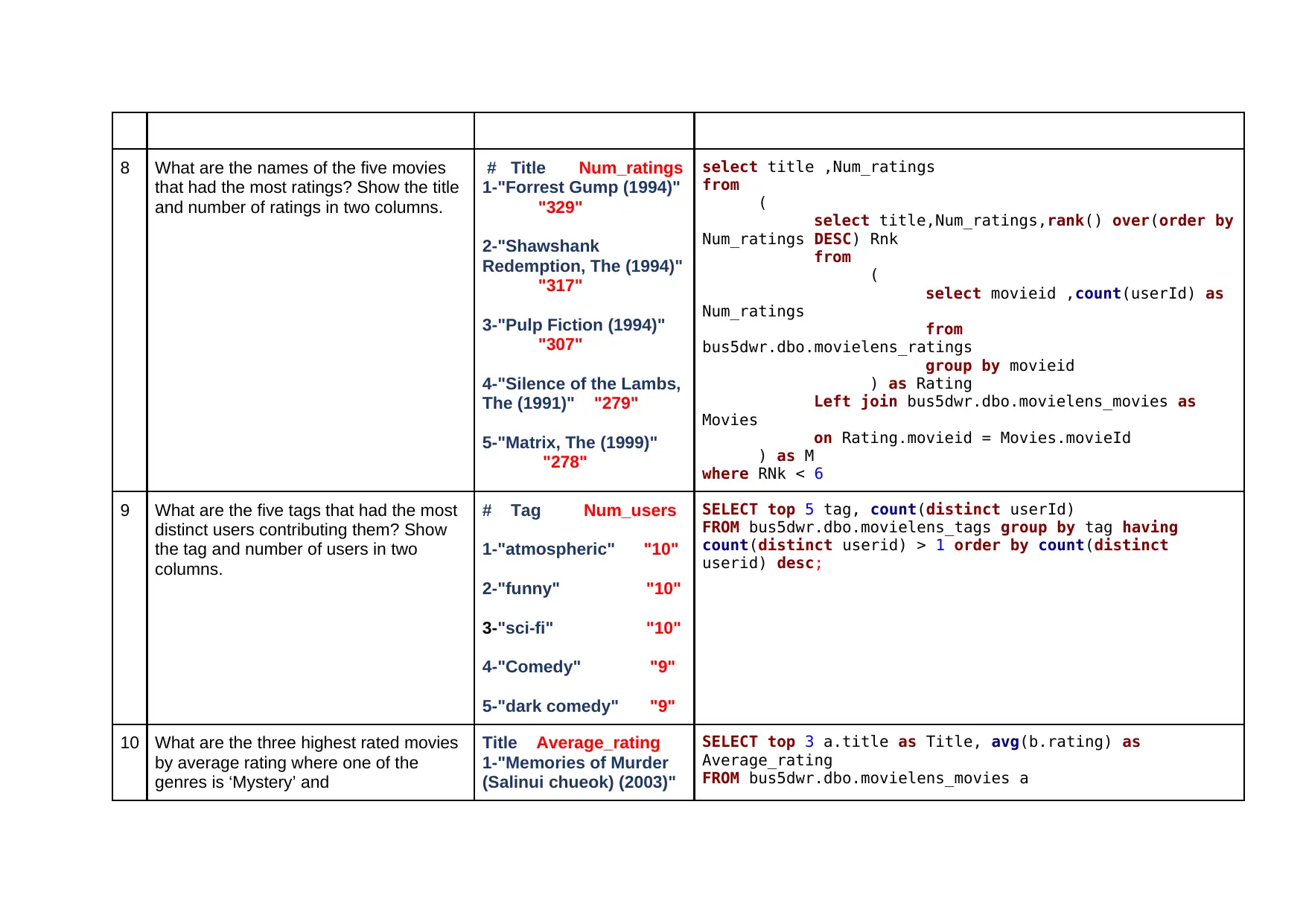
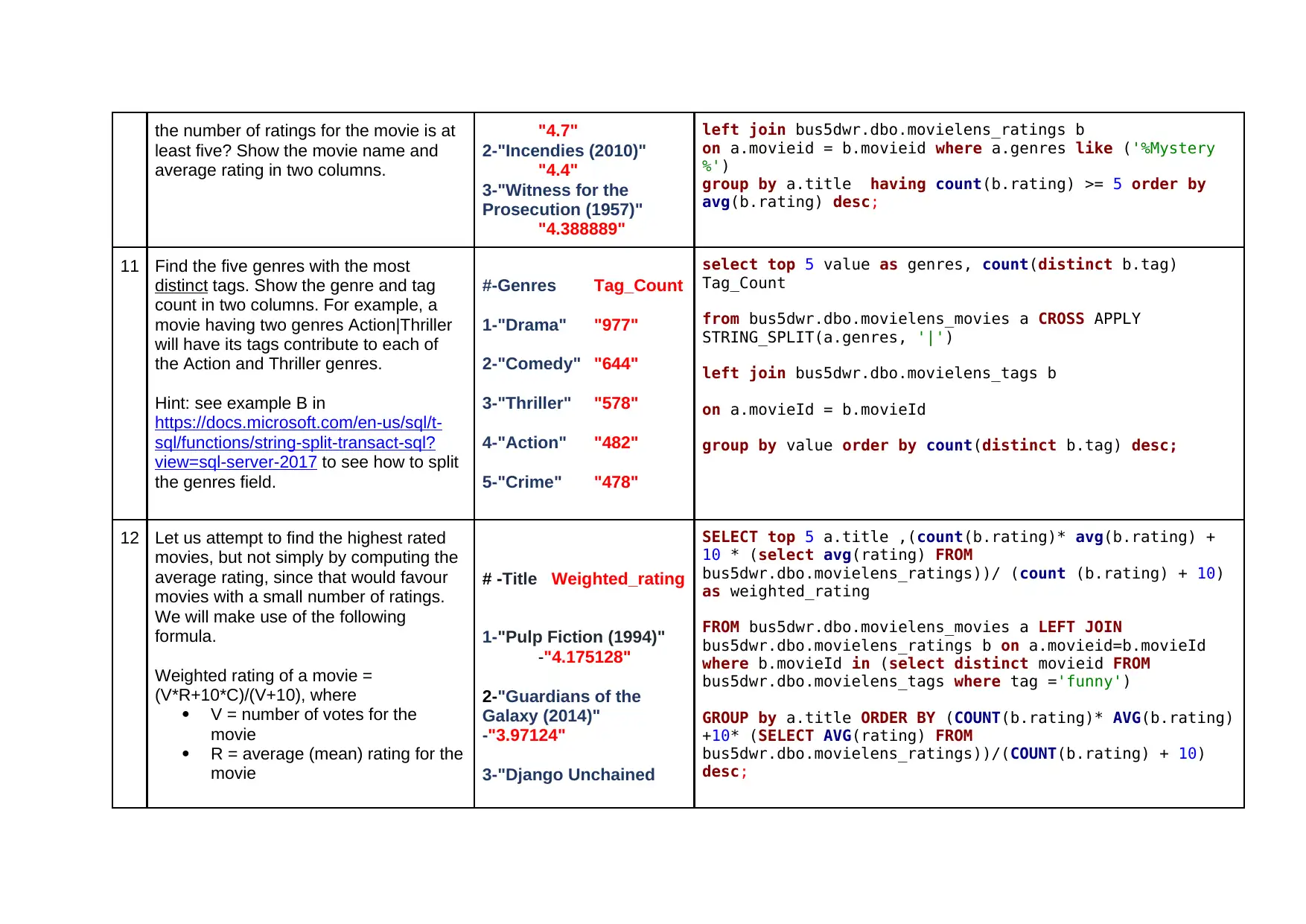
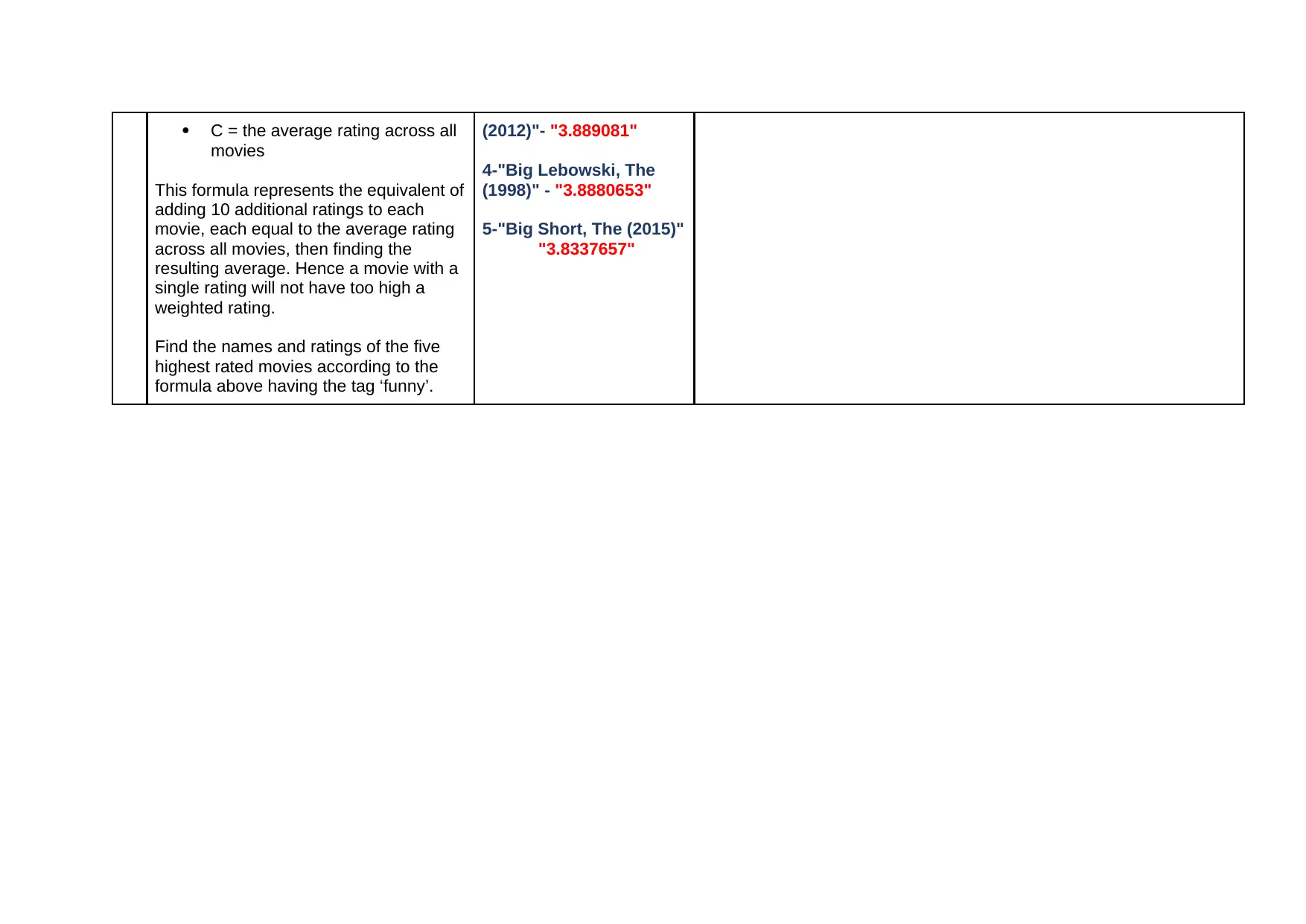


![[object Object]](/_next/static/media/star-bottom.7253800d.svg)